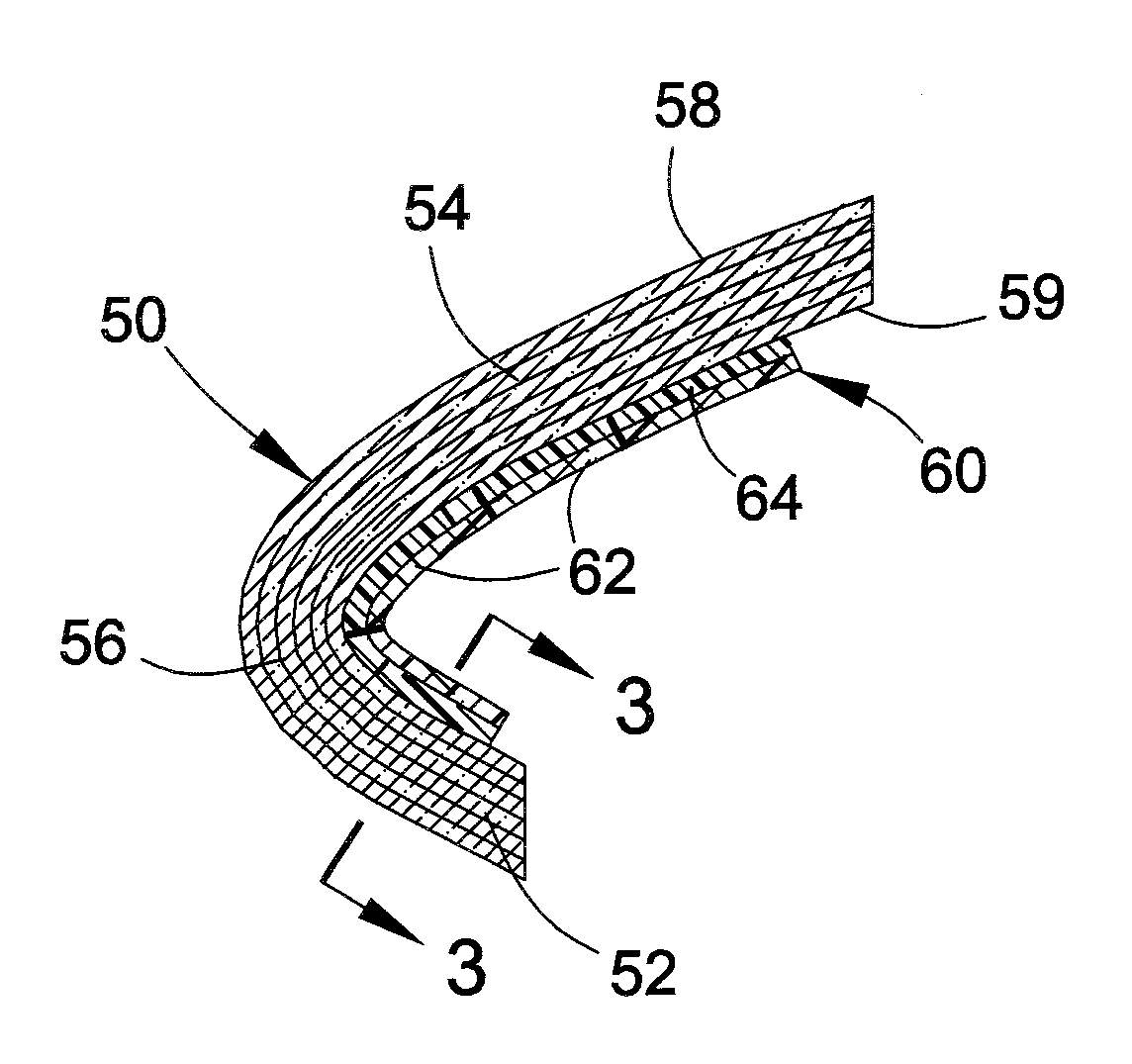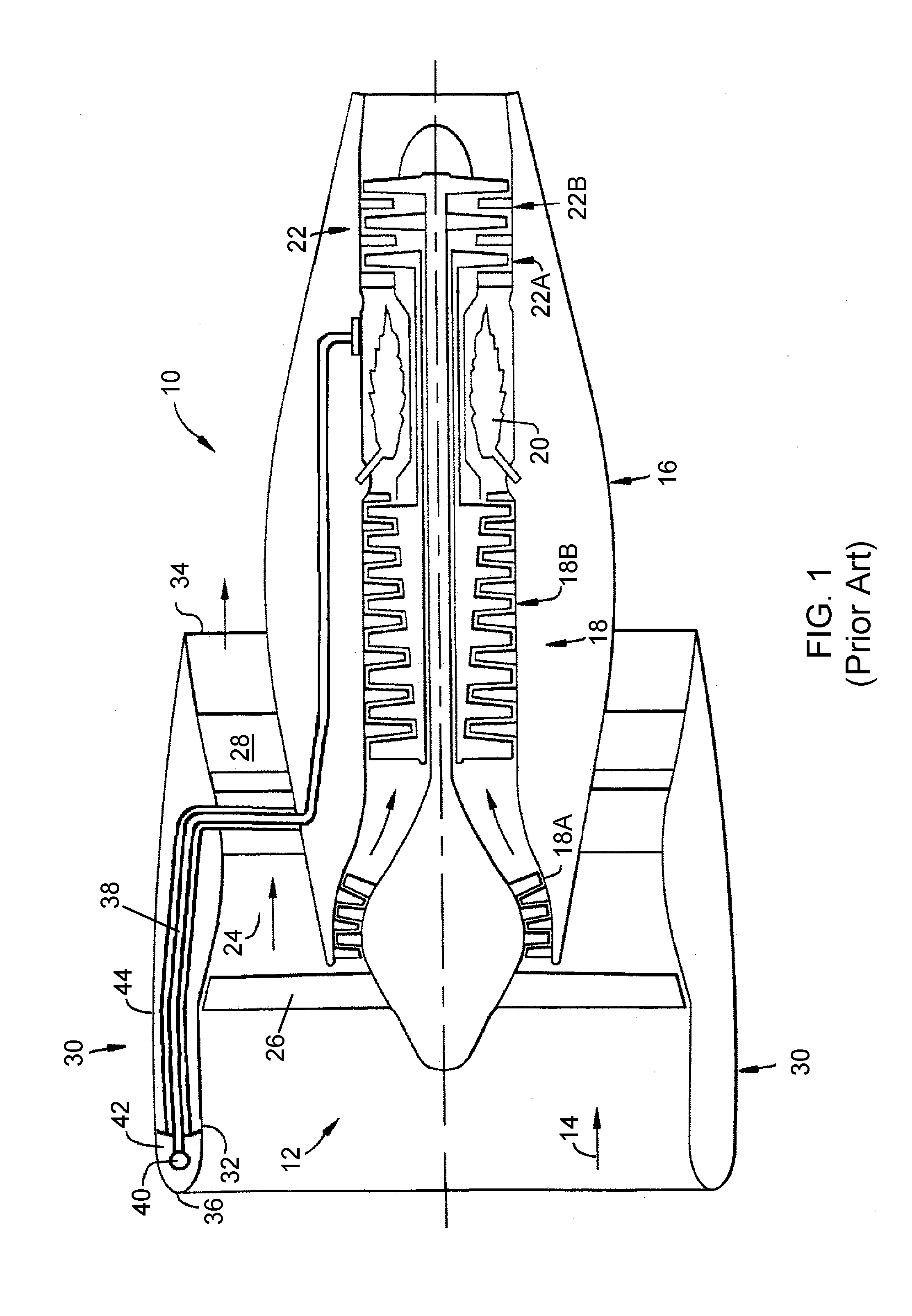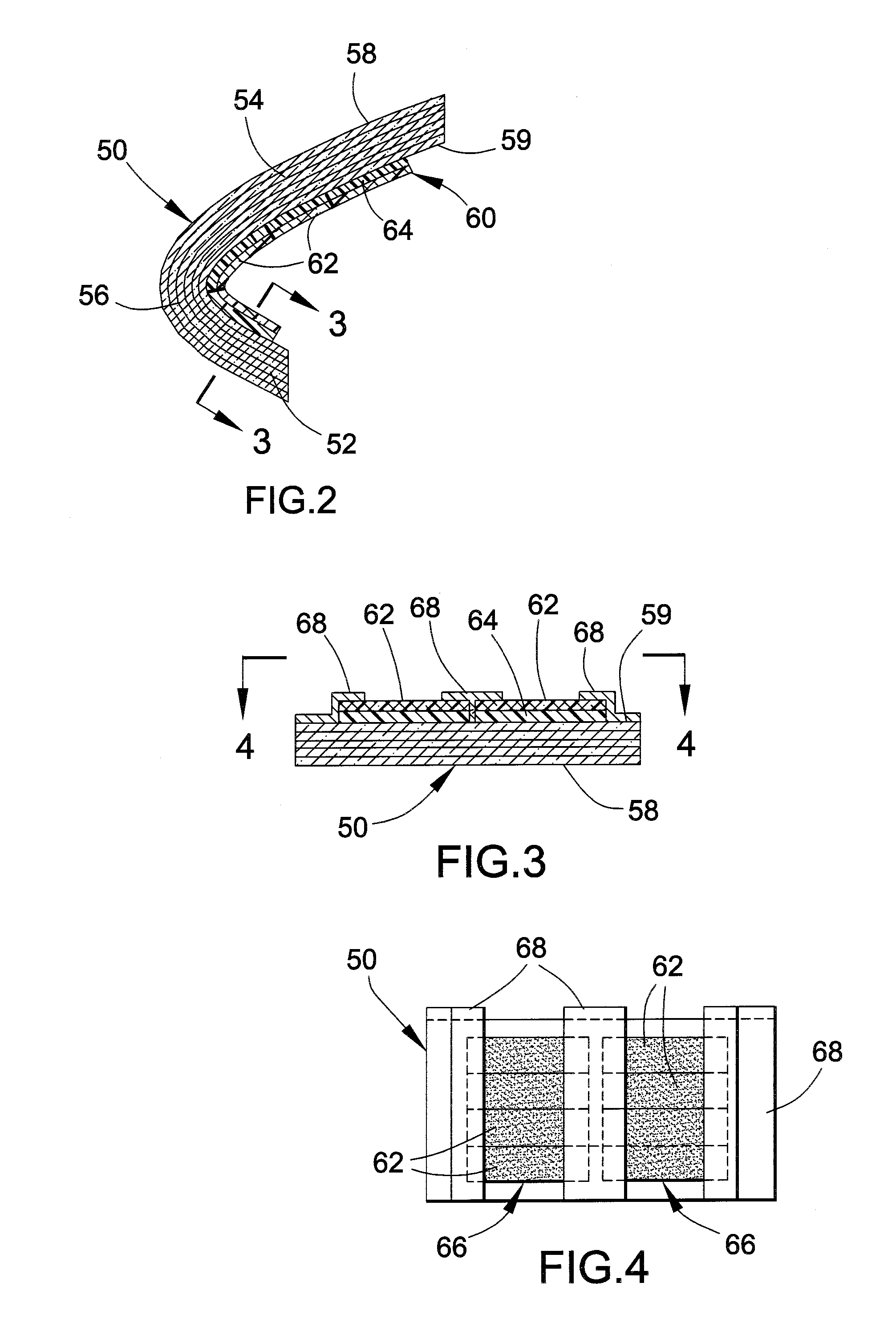Turbomachine nacelle and Anti-icing system and method therefor
a technology of anti-icing and nacelle, which is applied in the field of aircraft engine nacelles, can solve the problems of reducing engine efficiency, affecting engine performance, and requiring excessive energy for de-icing and anti-icing operations, so as to remove and prevent ice buildup
- Summary
- Abstract
- Description
- Claims
- Application Information
AI Technical Summary
Benefits of technology
Problems solved by technology
Method used
Image
Examples
Embodiment Construction
[0019]FIGS. 2 through 6 represent two embodiments of the present invention by which an anti-icing and de-icing capability (hereinafter, simply referred to as anti-icing) is provided in combination with an aircraft engine nacelle 50 or 70, which may be manufactured so that at least its section at the inlet lip is fabricated from a composite material. The invention is particularly well suited for use in a high-bypass turbofan engine, an example of which is the turbofan engine 10 represented in FIG. 1, though it should be understood that other applications are foreseeable. For convenience, the invention will be described with reference to the engine 10 in FIG. 1, though modified to some extent by details of the invention described in reference to the embodiments of FIGS. 2 through 6.
[0020]The nacelles 50 and 70 of FIGS. 2 through 6 can be formed of a variety of materials, including such conventional materials as metal alloys and particularly aluminum alloys. However, a preferred aspect...
PUM
| Property | Measurement | Unit |
|---|---|---|
| diameters | aaaaa | aaaaa |
| thicknesses | aaaaa | aaaaa |
| diameters | aaaaa | aaaaa |
Abstract
Description
Claims
Application Information
 Login to View More
Login to View More - R&D
- Intellectual Property
- Life Sciences
- Materials
- Tech Scout
- Unparalleled Data Quality
- Higher Quality Content
- 60% Fewer Hallucinations
Browse by: Latest US Patents, China's latest patents, Technical Efficacy Thesaurus, Application Domain, Technology Topic, Popular Technical Reports.
© 2025 PatSnap. All rights reserved.Legal|Privacy policy|Modern Slavery Act Transparency Statement|Sitemap|About US| Contact US: help@patsnap.com



